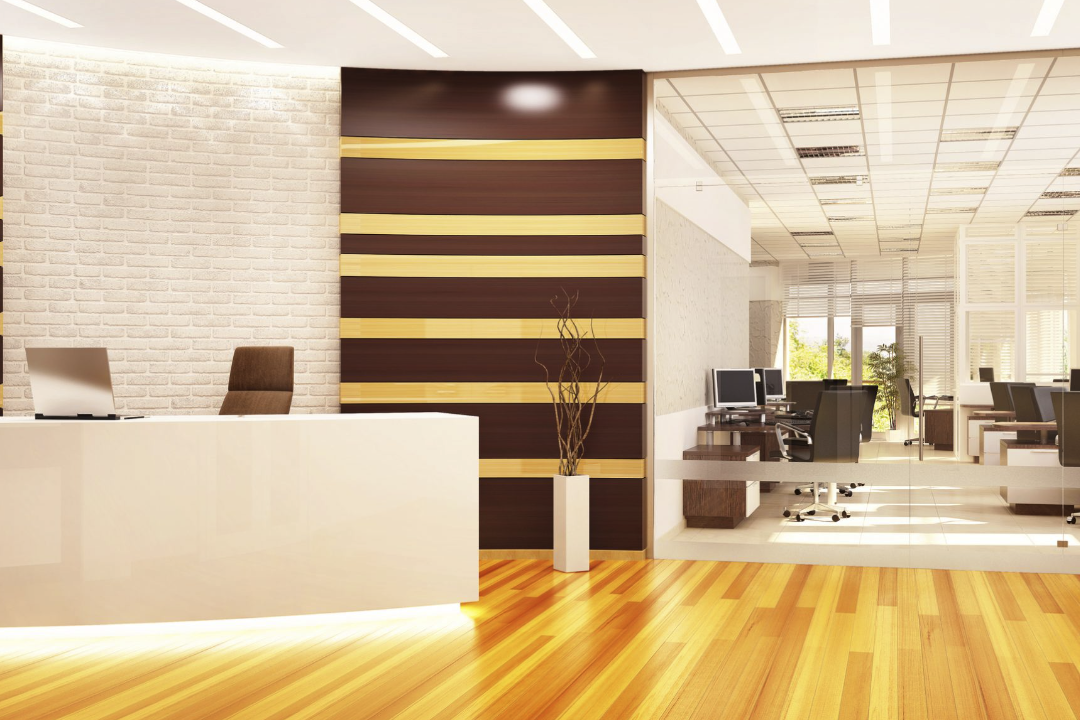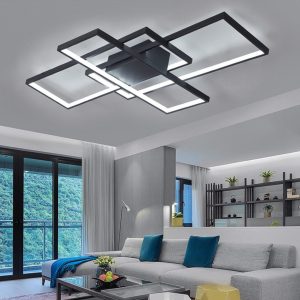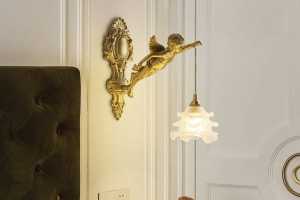Commercial LED lighting has emerged as a transformative force in the realm of business operations, offering a plethora of advantages that extend beyond mere illumination. One of the most significant benefits is energy efficiency. Traditional incandescent and fluorescent lights consume a considerable amount of energy, leading to higher utility bills.
In contrast, LED lights use up to 75% less energy than incandescent bulbs and can last up to 25 times longer. This remarkable longevity not only reduces the frequency of replacements but also minimizes the labor costs associated with maintenance and installation. For businesses, this translates into substantial savings over time, allowing funds to be redirected toward other critical areas of operation.
Moreover, the quality of light produced by LEDs is superior to that of traditional lighting options. LEDs provide a more consistent and brighter light, which can enhance visibility and improve the overall ambiance of a commercial space. This is particularly important in retail environments where lighting can significantly influence customer behavior and purchasing decisions.
Studies have shown that well-lit spaces can lead to increased foot traffic and higher sales. Additionally, LED lighting Addlifedecor is available in a variety of color temperatures, allowing businesses to create specific atmospheres that align with their brand identity and customer expectations. The ability to tailor lighting to suit different environments—from warm tones in restaurants to bright, cool tones in offices—further underscores the versatility of LED technology.
Choosing the right commercial LED lighting for your business
Understanding the Unique Needs of Each Space
The nature of the business, the layout of the space, and specific lighting needs all play a crucial role in making informed decisions about fixture types, brightness levels, and color temperatures. For example, a retail store may benefit from accent lighting to highlight products, while an office environment may prioritize uniform ambient lighting to reduce eye strain and enhance productivity.
Placement and Distribution of Light Fixtures
The layout of a commercial space can significantly impact how light is perceived and utilized. In a warehouse setting, high-bay LED fixtures may be necessary to provide adequate illumination for large areas with high ceilings. Conversely, in smaller spaces such as conference rooms or break areas, recessed lighting or pendant fixtures may be more appropriate.
Flexibility and Control
Businesses should also evaluate the potential for dimmable options or smart controls that allow for flexibility in lighting levels based on time of day or occupancy. By taking these factors into account, businesses can create a lighting scheme that not only meets functional needs but also enhances the overall aesthetic appeal of their environment.
Implementing a strategic lighting plan for maximum efficiency
A strategic lighting plan is essential for maximizing the efficiency and effectiveness of commercial LED lighting systems. This plan should begin with an assessment of current lighting conditions and energy consumption patterns. Conducting an energy audit can help identify areas where energy is being wasted and where improvements can be made.
For instance, businesses may discover that certain areas are over-lit or that outdated fixtures are still in use, leading to unnecessary energy expenditure. Once the assessment is complete, businesses can develop a comprehensive lighting strategy that includes specific goals and objectives. This may involve setting targets for energy reduction, improving light quality, or enhancing employee comfort.
Implementing zoning strategies—where different areas are lit according to their specific needs—can also contribute to greater efficiency. For example, using motion sensors in less-frequented areas such as storage rooms or hallways can ensure that lights are only on when needed, further reducing energy consumption. By aligning the lighting plan with broader business objectives, companies can create a cohesive approach that supports both operational efficiency and employee satisfaction.
Utilizing smart technology to optimize commercial LED lighting
The integration of smart technology into commercial LED lighting systems represents a significant advancement in how businesses manage their lighting environments. Smart lighting solutions offer features such as remote control, scheduling capabilities, and real-time monitoring, allowing businesses to optimize their energy usage dynamically. For instance, through mobile applications or centralized control systems, facility managers can adjust lighting levels based on occupancy patterns or time of day without needing to physically access each fixture.
Additionally, smart technology can facilitate data collection and analysis regarding energy consumption and lighting performance. This data can provide valuable insights into usage trends and help identify opportunities for further optimization. For example, if data reveals that certain areas are consistently underutilized during specific hours, businesses can adjust their lighting schedules accordingly to conserve energy.
Furthermore, integrating smart sensors with LED systems can enhance safety and security by ensuring that lights automatically activate in response to movement or environmental changes.
Maintenance and upkeep of commercial LED lighting systems
While commercial LED lighting systems are known for their longevity and low maintenance requirements compared to traditional lighting options, regular upkeep is still essential to ensure optimal performance and efficiency. Routine inspections should be conducted to check for any signs of wear or malfunctioning components. This includes examining fixtures for dust accumulation or damage that could affect light output and quality.
Keeping fixtures clean not only enhances their performance but also prolongs their lifespan. In addition to physical inspections, businesses should also monitor the performance of their LED systems through regular data analysis. Tracking metrics such as energy consumption and light output can help identify any deviations from expected performance levels.
If discrepancies arise—such as increased energy usage without a corresponding increase in light output—this may indicate a need for maintenance or replacement of specific components. Establishing a proactive maintenance schedule can help prevent unexpected failures and ensure that the lighting system continues to operate at peak efficiency.
The environmental impact of switching to commercial LED lighting
The environmental benefits of transitioning to commercial LED lighting are profound and multifaceted. One of the most significant impacts is the reduction in greenhouse gas emissions associated with lower energy consumption. Traditional incandescent bulbs convert only about 10% of their energy into visible light, with the remainder lost as heat.
In contrast, LEDs convert a much higher percentage of energy into light, resulting in less overall energy demand from power plants—many of which rely on fossil fuels that contribute to climate change. Moreover, LEDs contain no hazardous materials such as mercury, which is commonly found in fluorescent lights. This absence not only makes LEDs safer for human health but also reduces environmental contamination risks during disposal.
As businesses increasingly prioritize sustainability initiatives, adopting LED technology aligns with broader corporate social responsibility goals and demonstrates a commitment to reducing environmental footprints. By making this switch, companies not only contribute positively to the planet but also enhance their brand image among environmentally conscious consumers.
Cost savings and return on investment with commercial LED lighting
The financial implications of switching to commercial LED lighting are compelling for businesses across various sectors. The initial investment in LED technology may be higher than traditional options; however, the long-term cost savings often far outweigh these upfront expenses. With reduced energy consumption translating into lower utility bills—often by 50% or more—businesses can recoup their investment within a few years through savings alone.
Additionally, the extended lifespan of LED fixtures means fewer replacements are needed over time, further contributing to cost savings related to maintenance and labor. For example, if a business replaces traditional bulbs every year but invests in LEDs that last for 10 years or more, the cumulative savings from reduced replacement costs can be substantial. Furthermore, many utility companies offer rebates or incentives for businesses that switch to energy-efficient technologies like LEDs, providing an additional financial boost that enhances return on investment (ROI).
By carefully analyzing these factors, businesses can make informed decisions that align with both their financial goals and sustainability objectives.
Case studies and success stories of businesses maximizing efficiency with commercial LED lighting
Numerous businesses have successfully implemented commercial LED lighting solutions to enhance efficiency and achieve significant cost savings. A notable example is Walmart, which has made substantial investments in LED technology across its stores worldwide. By retrofitting its facilities with LED lights, Walmart has reported annual savings exceeding $100 million in energy costs alone.
The company’s commitment to sustainability has not only improved its bottom line but also positioned it as a leader in corporate responsibility within the retail sector. Another compelling case study comes from the hospitality industry, where hotels have adopted LED lighting to enhance guest experiences while reducing operational costs. The Hilton chain has implemented LED retrofits in many of its properties, resulting in energy savings of up to 30%.
These upgrades have improved guest satisfaction by providing better-quality lighting in rooms and common areas while simultaneously lowering energy expenses—a win-win scenario for both guests and hotel management. These examples illustrate how businesses across various industries are leveraging commercial LED lighting not just as a means of illumination but as a strategic tool for operational efficiency and sustainability. By investing in advanced lighting solutions, companies are not only enhancing their environments but also paving the way for future innovations in energy management and environmental stewardship.



